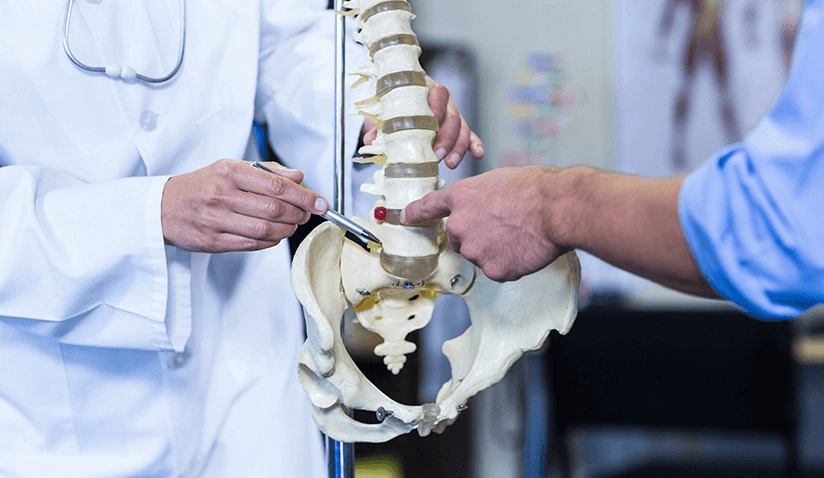Laminectomy vs. Laminotomy vs. Discectomy vs. Foraminotomy – Which Spinal Decompression Surgery Is Right for You?

Chronic lower back pain that is not resolved by pain management medications and procedures is most likely due to impingement of a nerve in the lumbar spine. Spinal decompression refers to the different types of treatments, both surgical and non-surgical, that can be applied for the treatment of back pain. These methods take pressure off of the nerves to alleviate pain.
What is Spinal Decompression Surgery?
Spinal decompression surgery describes the different surgical procedures that can be used for the treatment of lower back pain and nerve release. These procedures can only be performed if other forms of therapy such as physical therapy, hot and cold packs, traction, and nerve stimulation have failed to provide any relief. Moreover, they aren’t performed for acute pain as it, more often than not, resolves spontaneously.
Spinal decompression surgeries are usually performed using minimally invasive techniques, and the main aim of these procedures is to relieve symptoms of the spinal cord or spinal nerve compressions, such as pain, tingling, numbness, and weakness over the areas supplied by the nerve.
These surgeries are mostly categorized under lumbar spine surgery, as the lumbar region is targeted during these procedures because it is the most likely location to be affected by spinal cord pressure and nerve impingement.
Different types of Spinal Decompression Surgery
Depending on the location and cause of the spinal decompression, a surgeon will decide which exact lumbar spine surgery needs to be performed. There are quite a few decompression surgery types that can be performed, as there are quite a few causes of decompression.
Laminotomy
Laminotomy is a surgical procedure performed on either the cervical spine or the lumbar spine with the purpose of spinal decompression. Apart from the lumbar spine, the cervical spine is also widely affected by nerve compression, mostly due to cervical disc herniation. For this procedure, your surgeon will make a hole in the lamina of the vertebral arch and remove a small part of the bone.
Discectomy
One of the major causes of spine compression is disc herniation, which compresses the spinal cord or the associated nerves. The pain can be quite serious, and depending on the extent of the herniation and compression, most treatment methods may not be beneficial. Discectomy is a surgical procedure for resolving spinal decompression. It involves the removal of the herniated disk for the resolution of nerve impingement and pain.
A discectomy is a major yet common surgical procedure that should only be performed if other methods of treatment have failed to resolve spinal disc herniation. Second opinions should be considered, and this procedure should never be performed as the first-line treatment for spinal disc herniation.
Foraminotomy
Spinal nerves can become compressed in the intervertebral foramina, which is a hole in the bone through which they pass before going on to innervate specific parts of the body. Foraminotomy is a procedure that includes surgical enlargement of the intervertebral foramen to relieve the pressure on the nerve.
Laminectomy
Laminectomy is the surgical procedure performed to relieve the pressure on the nerve by removing a part of the vertebra that is compressing the spine. This procedure includes the removal of either a part of or the entire lamina. As laminectomy is a major surgical procedure with a large visible scar and potential health complications, it is not recommended as the first-line treatment for spinal pressure relief. All other sources must be exhausted before the decision to perform a laminectomy is made.
Differences between the lumbar spine surgeries
Each lumbar spinal decompression procedure has the same goal of pain relief, spinal decompression, and resolution of nerve impingement or compression. However, the way each procedure does that is different. Before deciding on a specific lumbar spine surgery, it is important to thoroughly discuss the differences between the procedures and the cause of your spinal decompression.
Laminotomy Vs Laminectomy
Laminotomy is a relatively minor procedure that only includes drilling a hole in the lamina of the vertebra, while laminectomy is a major procedure requiring the removal of the whole lamina from the vertebra.
Lumbar laminectomy Vs Microdiscectomy or Discectomy
Lumbar laminectomy, as mentioned above, involves the removal of the lamina, a part of the vertebral bone. However, microdiscectomy involves the removal of a portion of the herniated disc to relieve spinal nerve compression caused by the disc.
Laminotomy Vs Foraminotomy
Foraminotomy revolves around the enlargement of the natural foramen through which the nerve that is compressed passes. Laminotomy involves the drilling of a new hole in the lamina of the vertebral bone for alleviation of pain.
How to choose the right nerve decompression surgery?
The most important thing to do when choosing between nerve decompression surgeries is to have a detailed conversation with the surgeon about the cause of your nerve compression and back pain, along with the different surgical options available and the risks of each surgery. This will help you understand the procedures, and you can then, along with your surgeon, decide on the right type of surgery for you.
Risks of Spinal Decompression Surgery
Spinal decompression surgery, despite its high success rates and efficiency, is not recommended for everyone. Firstly it is only recommended after other treatment methods have been at least attempted, and secondly, it is not recommended if there is a spinal fracture or advanced-stage osteoporosis of the vertebrae. In the case of an abdominal aortic aneurysm and tumors, it is not recommended to undergo lumbar spine surgery for spinal decompression.
Some of the common risks and complications associated with a spinal decompression procedure include, but are not limited to:
- Allergic reaction to the anesthesia
- Infection
- Bleeding and blood clot formation
- Nerve or tissue damage
A complication of lumbar spine surgery unique to laminectomy is the post-laminectomy syndrome, which basically refers to the continuation of the sensation of pain despite having undergone surgery for spinal decompression. This syndrome arises due to irritation or inflammation of the nerve roots from nerve damage during the laminectomy procedure.
How long does it take to recover from lumbar decompression surgery?
Following a lumbar decompression surgery, you may feel sore with a bad back for a couple of days. The first week may be marked with difficulty moving, and there might be some pain and swelling too. However, full mobility will return by the end of 4 weeks to 6 weeks, which is the average recovery time from lumbar decompression surgery.
How serious is spinal decompression surgery?
Spinal decompression surgery is a major surgical procedure that takes approximately 2 hours, on average. The duration of the procedure changes based on the type of procedure being performed and on the presence of any complications. Not only is the procedure itself so intensive, but it is also followed by an extensive recovery period.
What is the success rate of lumbar decompression surgery?
Lumbar decompression surgery is not the first-line treatment for lower back pain due to spinal cord or nerve compression, but it is a highly efficient treatment. Most patients experience significant relief from pain and regain full mobility post-operation. Lumbar decompression surgery has an extremely high success rate of almost 90 percent.

Sana Hospital Group is one of the largest independent healthcare providers in Germany. With over 50 world-class hospitals and more than 2 million patients yearly, Sana operates leading facilities, among them university hospitals, tertiary care centers, and specialized hospitals to deliver a broad portfolio of top-tier medical care. Whether it is preventive health care, an acute or chronic illness, a planned procedure, or a long-term diagnosis - more than 600 chief physicians, 4,500 medical professionals, and 11,000 nursing staff provide excellent treatment options, world-class medicine, and the best possible medical care.
Featured Blogs



